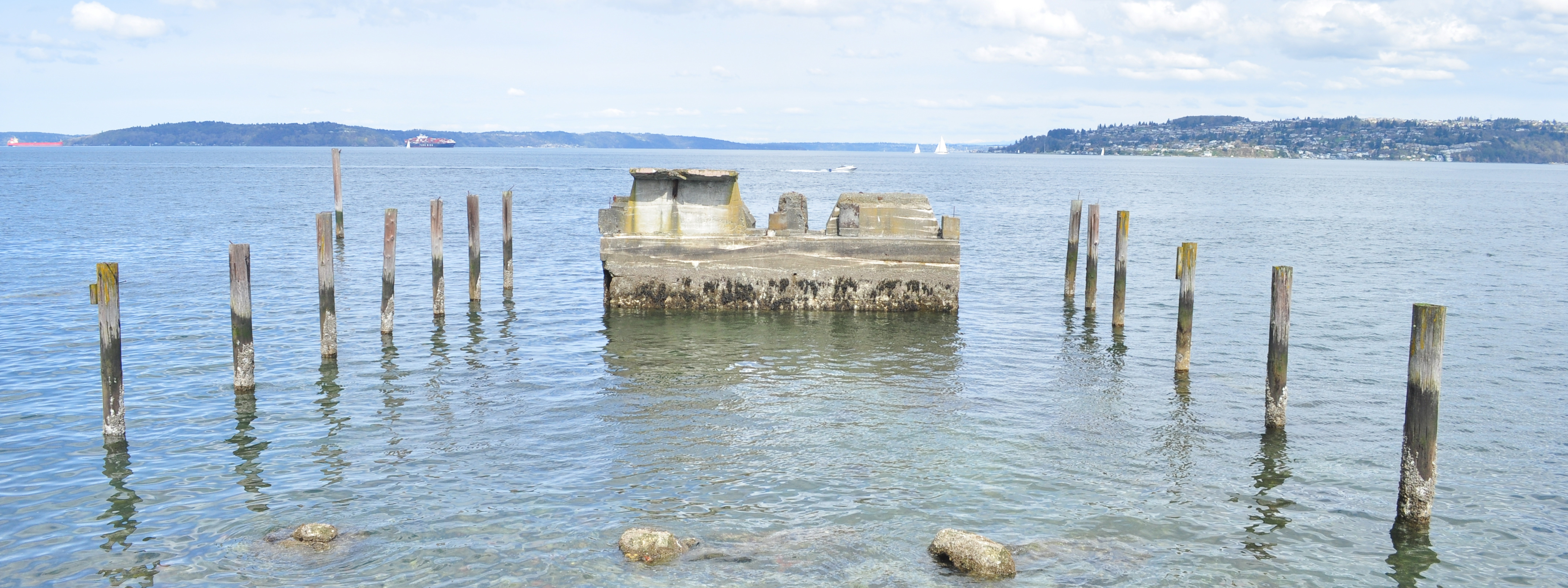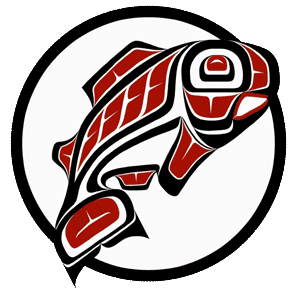
Environmental Scientists Contribute to Latest Sound Monitoring Report
UW Tacoma students and faculty have made important contributions to the Puget Sound Marine Waters 2018 Overview.
This Section's arrow_downward Theme Info Is:
- Background Image: ""
- Theme: "light-theme"
- Header Style: "purple_dominant"
- Card Height Setting: "consistent_row_height"
- Section Parallax: "0"
- Section Parallax Height: ""
(Photo above: Remnants of a former pier on Commencement Bay, Tacoma, Wash, on the waterfront along Ruston Way. Original image recropped. Phobo by Joe Mabel, GFDL, CC-BY-SA-4.0.)
Several students and faculty in the School of Interdisciplinary Arts & Sciences and at the Center for Urban Waters at UW Tacoma have made important contributions to an annual report on the quality and conditions of Puget Sound marine waters.
Cheryl Greengrove, Associate Professor, and Julie Masura, Senior Lecturer, mentored teams of students that performed field work and co-authored sections of the Puget Sound Marine Waters 2018 Overview, published in November 2019.

The overview, produced every year since 2011, is published by the National Oceanic and Atmospheric Administration’s Northwest Fisheries Science Center for the Puget Sound Ecosystem Monitoring Program’s Marine Waters Workgroup. It provides technical reports on the status of many different components of the Puget Sound ecosystem, from climate and wind patterns to measures of water quality such as salinity, dissolved oxygen, temperatures and plankton abundance. There are sections on bacteria and pathogens, forage fish, marine birds and mammals such as orcas.
Greengrove, Masura and their students contributed research on the abundance of microorganisms, known as Alexandrium, that produce a neurotoxin that can cause Paralytic Shellfish Poisoning (PSP) in humans. The presence in the seafloor of a dormant form of Alexandrium, called a cyst, corresponds to areas where high levels of neurotoxin are found in shellfish. Greengrove and Masura have led annual surveys of cysts, collecting samples of seafloor and measuring cyst abundance at up to 80 locations throughout Puget Sound. Students who worked with Greengrove and Masura on the 2018 findings include Sebastian Dantes and Alex Natkha, who both graduated in 2018 with a B.S. in environmental science.
Masura, Greengrove and students also contributed research on the abundance of microplastics found in sediments on the seafloor of Puget Sound. Using field and laboratory methods developed at the Center for Urban Waters, the researchers determined the magnitude of microplastics pollution each year from 2014-2018 at 10 long-term Department of Ecology sampling stations scattered throughout the North, Central and South Puget Sound regions.
In 2018, no location had less than 100 pieces of microplastics per square meter sampled (things like synthetic fibers, tire particles, city dust, marine coatings and plastic pellets) and two locations had as many as 10,000 pieces per square meter.
Students that worked with Masura and Greengrove from 2014-2018 were Margaret Baer, currently a senior in environmental science; Ren-Chieh Chang, ’16, BS Environmental Science; Abigail Deaton, ’19, BA Environmental Sustainability; Ashley Fowler, ’16, BS Environmental Science; Brenda Solano Jimenez, ’18, BS Environmental Science; and Amy Self, ’17, BA Environmental Studies.
Recent news
Main Content
Gathering Strength
News Tags on this arrow_upward Story:
- None
Main Content
UW Tacoma Enrollment up 4% for Autumn 2024
News Tags on this arrow_upward Story:
- None
Main Content
Celebrating First Gen
News Tags on this arrow_upward Story:
- None



